
The world of theatre and cinema mourns the passing of Sir Michael Gambon, a titan of the stage and screen, who died on September 27, 2023, at the age of 82. Renowned for his commanding presence, distinctive voice, and remarkable versatility, Gambon’s career spanned an extraordinary six decades, leaving an indelible mark on audiences across generations. From his early days in Dublin to his iconic portrayal of Albus Dumbledore in the beloved “Harry Potter” series, his journey was one of consistent artistic excellence and profound dedication to his craft.
His death, following a bout of pneumonia, was announced by his publicist, leading to an outpouring of tributes from colleagues and admirers worldwide. Gambon was a figure who could seamlessly transition from Shakespearean tragedy to contemporary drama, from lighthearted comedy to intense character studies, embodying each role with a unique blend of gravitas, mischief, and profound humanity. His ability to captivate, whether on the grandest stage or the intimate screen, established him as one of the preeminent actors of his generation.
This article endeavors to provide an in-depth retrospective on the life and monumental career of Sir Michael Gambon, tracing his trajectory from an apprentice toolmaker to a knighted luminary of British and Irish performing arts. Through an examination of key moments, pivotal roles, and his enduring artistic philosophy, we seek to honor the memory of a true legend whose work will continue to inspire and entertain for years to come.
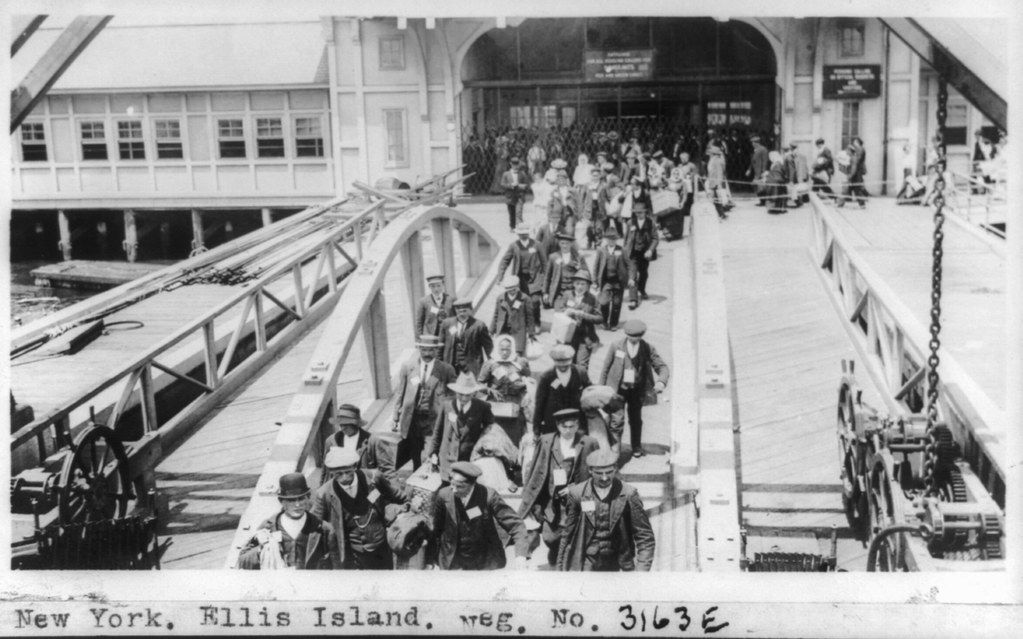
1. **From Dublin to London: The Formative Years and Unexpected Path to Acting**Michael John Gambon was born in Cabra, a suburb of Dublin, on October 19, 1940. His early childhood was marked by a significant move when, at the age of six, his father, an engineering operative, sought work in the post-World War II rebuilding of London, relocating the family to Mornington Crescent in Camden. It was here, within an Irish immigrant community, that Gambon spent his formative years, growing up in an environment that would subtly shape his later artistic sensibilities.
His formal education led him through St Aloysius Boys’ School and St Aloysius’ College, before he left Crayford Secondary School at 15 without qualifications. This early departure from traditional schooling led him to an unexpected vocational path; at 16, he began an apprenticeship as a toolmaker with Vickers-Armstrongs. By the age of 21, he had become a qualified engineering technician, a profession he maintained for an additional year. This period also ignited a lifelong passion for collecting antique guns, clocks, watches, and classic cars, a testament to his meticulous nature and appreciation for craftsmanship.
It was not through conventional drama schools, however, but through a daring act of initiative that Gambon first entered the world of professional acting. At 24, he famously penned a letter to Micheál Mac Liammóir, the Irish theatre impresario who managed Dublin’s Gate Theatre, accompanying it with a rich and entirely fabricated theatrical curriculum vitae. This audacious gamble paid off, securing him his professional stage debut in the Gate Theatre’s 1962 production of “Othello,” where he played the minor role of “Second Gentleman,” marking the unlikely genesis of an extraordinary career.

2. **Early Triumphs: Forging a Path with Laurence Olivier at the National Theatre**Gambon’s nascent talent quickly garnered attention. A year after his debut, while auditioning with the opening soliloquy from “Richard III,” he captivated none other than Laurence Olivier. Olivier, then recruiting for his newly established National Theatre Company, saw immense promise in the young actor. Gambon was subsequently hired as one of the “to be renowned,” joining a cohort of promising talents that included Robert Stephens, Derek Jacobi, and Frank Finlay. He appeared on cast lists as “Mike Gambon” during this formative period.
The company’s initial base was the Old Vic, where Gambon played numerous small roles over four years, participating in many National Theatre productions. His early work included named roles in “The Recruiting Officer” and “The Royal Hunt of the Sun,” under the direction of esteemed figures such as William Gaskill and John Dexter. These years provided an invaluable apprenticeship, exposing him to the highest echelons of British theatre and allowing him to hone his craft under the guidance of one of the greatest actors of all time.
Following his tenure at the Old Vic, Olivier, recognizing the need for varied experience, advised Gambon to spend time in provincial repertory theatre. In 1967, Gambon departed the National Theatre to join the Birmingham Repertory Company. This move proved crucial, affording him his first opportunities to tackle title roles in Shakespearean classics such as “Othello” (a role he held a particular fondness for), “Macbeth,” and “Coriolanus,” thereby solidifying his foundation as a serious classical actor.

3. **The Breakthrough: Captivating Audiences as Philip Marlow in “The Singing Detective”**While his stage work steadily built his reputation among theatre connoisseurs, it was in the mid-1980s that Michael Gambon achieved widespread public recognition and became a household name. This came through his starring role in Dennis Potter’s groundbreaking 1986 Anglo-American public television mini-series, “The Singing Detective.” In this complex and innovative drama, Gambon portrayed Philip Marlow, a psoriasis-ridden crime novelist who, bedridden in a hospital, retreats into a fantastical world of musical numbers and detective noir.
Gambon’s performance as Marlow was a tour de force, showcasing an extraordinary range that encompassed physical discomfort, psychological torment, and bursts of song-and-dance fantasy. The role demanded both intense dramatic power and a nuanced understanding of dark humor, which Gambon delivered with compelling conviction. It was a career-defining moment that earned him critical adoration and his first British Academy Television Award for Best Actor, firmly establishing him as a major talent beyond the theatrical stage.
“The Singing Detective” was not merely a popular success; it was a cultural phenomenon that redefined the possibilities of television drama. Gambon’s portrayal resonated deeply with audiences and critics alike, demonstrating his exceptional ability to anchor a challenging narrative and bring a deeply flawed yet profoundly human character to life. This role catapulted him into a new tier of celebrity, paving the way for further significant roles in both film and television.
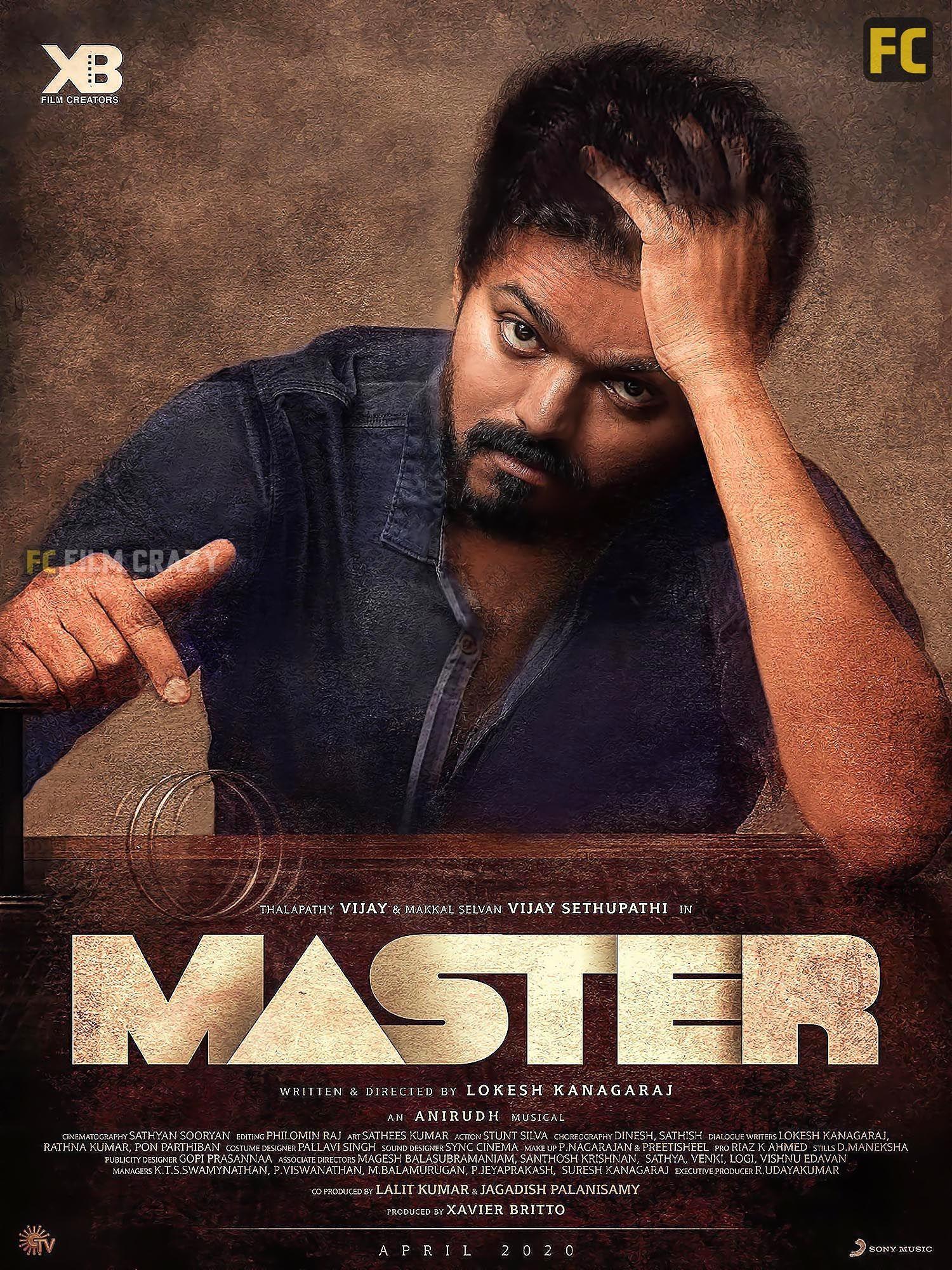
4. **Master of the Stage: Acclaim, Olivier Awards, and Commanding Presence**Gambon’s theatrical prowess continued to flourish throughout the 1980s and beyond, earning him numerous accolades and cementing his reputation as a formidable stage actor. His powerful voice and undeniable presence were perfectly suited to grand productions, notably evidenced in John Dexter’s masterful 1980 staging of Bertolt Brecht’s “The Life of Galileo” at the National Theatre. This production, featuring Gambon as Galileo, was a rare popular success for Brecht’s work, with National Theatre director Peter Hall praising Gambon as “unsentimental, dangerous and immensely powerful.” The Sunday Times hailed his performance as “a decisive step in the direction of great tragedy… great acting,” and fellow actors spontaneously applauded him in the dressing room on opening night.
His acclaimed performance as Eddie Carbone in a 1987 National Theatre revival of Arthur Miller’s “A View from the Bridge,” directed by Alan Ayckbourn, further underscored his theatrical magnitude. The Guardian effused, “In the first place it shows Michael Gambon shaking hands with greatness,” highlighting his profound emotional depth and raw power. These roles, alongside others like his performance in Harold Pinter’s “Betrayal,” showcased his versatility from comedic timing to profound dramatic intensity.
Over his career, Gambon was nominated for an impressive thirteen Olivier Awards, winning three times. His victories included Best Comedy Performance for “A Chorus of Disapproval” (1985), Best Actor for “A View from the Bridge” (1987), and again for Best Comedy Performance in “Man of the Moment” (1990). These awards collectively underscored his diverse talents and his consistent ability to deliver performances that were both critically lauded and deeply impactful, solidifying his standing as one of the preeminent stage actors of his generation.
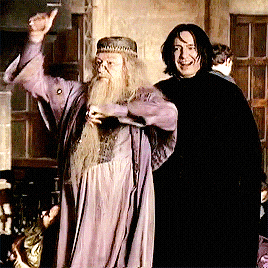
5. **The Enigma of “The Great Gambon”: A Private Man’s Public Artistry**Michael Gambon’s remarkable talent and imposing stage presence led to a rather grand moniker bestowed upon him by none other than Sir Ralph Richardson: “The Great Gambon.” While Gambon himself, with characteristic modesty, dismissed it as a mere “circus slogan,” the title stuck, becoming a widely recognized testament to his extraordinary abilities. Sheridan Morley, reviewing Nicholas Wright’s “Cressida” in 2000, perceptively remarked that Gambon’s “eccentricity on stage now begins to rival that of his great mentor Richardson,” drawing a parallel to the legendary actor’s unique theatrical flair.
Despite his public renown, Gambon was known for being a fiercely private individual, a quality that perhaps only amplified the mystique around his powerful performances. He rarely gave interviews, and those he did often, as Morley noted, “raised more questions than they answered.” This “non-starry star,” as Alan Ayckbourn described him, preferred to remain out of the limelight when not performing. His personal life was guarded, creating a distinct separation between his public persona and his private self.
This blend of immense public artistry and personal reticence contributed to his unique appeal. His audiences were consistently drawn to the characters he embodied, a testament to his transformative power, rather than the celebrity of the actor himself. This dedication to the craft over personal fame further cemented his reputation as an actor of profound integrity and skill, allowing his performances to speak for themselves in their full, captivating glory.
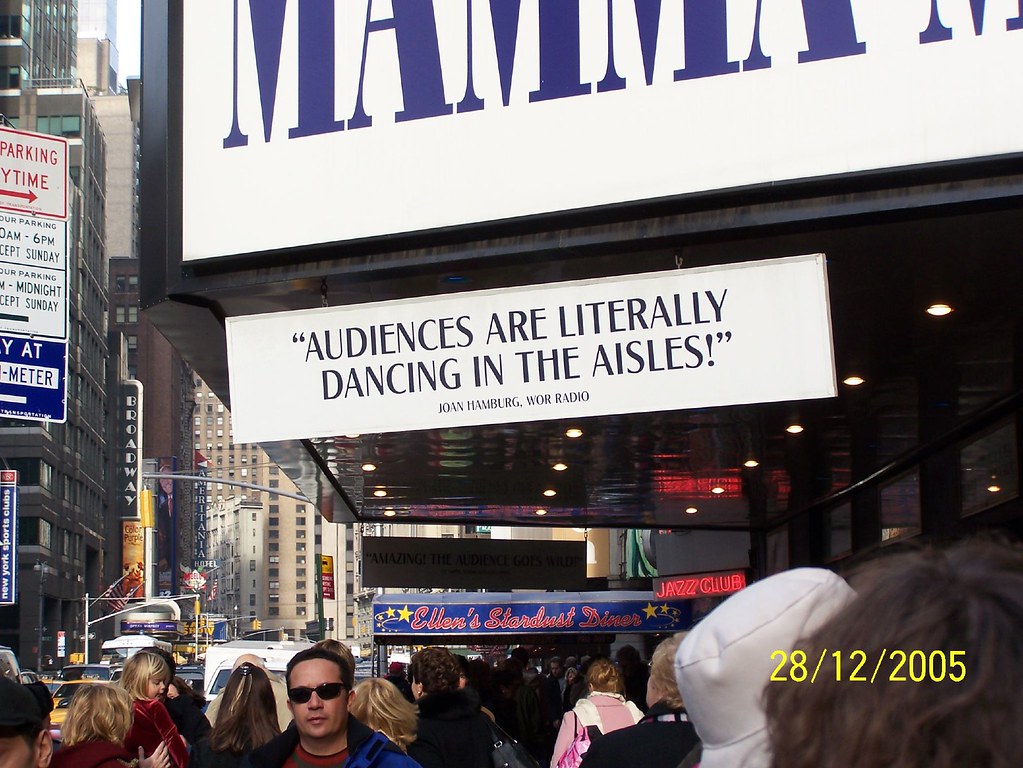
6. **Crossing the Atlantic: A Resounding Broadway Debut in “Skylight”**In 1995, Michael Gambon’s formidable stage presence extended across the Atlantic with his acclaimed Broadway debut. He starred in David Hare’s play “Skylight,” opposite Lia Williams, which initially opened to rave reviews at the National Theatre in London. The production subsequently transferred to Wyndham’s Theatre in the West End before making its journey to New York, where it ran for a demanding four months at the Bernard B. Jacobs Theatre.
Gambon’s performance in “Skylight” was met with widespread critical acclaim in America. His portrayal of the rough-hewn character was noted for its profound grace, which transcended the physical, as observed by Variety: “Gambon, an Irishman revered on the London stage, gives his rough-hewn character a grace that goes beyond the physical.” The intensity of the role, however, took a considerable toll on the actor. He later confessed to Michael Owen in the Evening Standard that “Skylight was ten times as hard to play as anything I’ve ever done,” adding, “I had a great time in New York, but wanted to return,” reflecting the sheer exhaustion the role demanded.
For this remarkable Broadway debut, Gambon received his only Tony Award nomination for Best Actor in a Play, a significant recognition of his impact on the American theatrical landscape. His ability to command a New York stage with the same depth and power he exhibited in London further solidified his international reputation as an actor of immense talent, proving that his artistry resonated deeply with audiences and critics on both sides of the ocean.
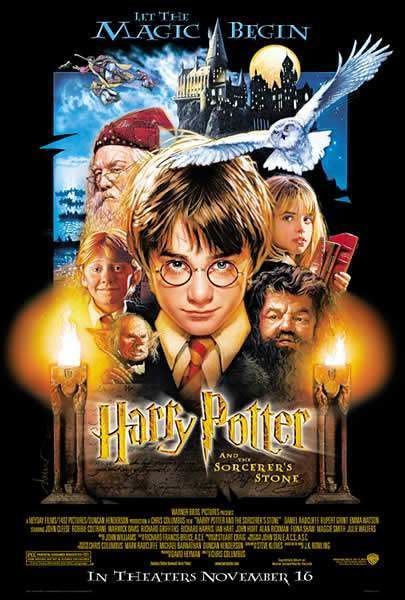
7. **The Enduring Magic: Stepping into the Robes of Hogwarts’ Albus Dumbledore**Perhaps the role for which Michael Gambon gained the broadest global recognition was his portrayal of Albus Dumbledore, the enigmatic and wise headmaster of Hogwarts School of Witchcraft and Wizardry, in the “Harry Potter” film series. He took on this immensely popular role following the death of Richard Harris in 2002, who had played Dumbledore in the first two installments. Gambon first appeared as Dumbledore in “Harry Potter and the Prisoner of Azkaban” (2004) and continued to grace the screen as the beloved wizard in six of the eight films, concluding with “Harry Potter and the Deathly Hallows – Part 2” (2011).
Gambon’s interpretation of Dumbledore, while distinct from his predecessor’s, quickly became iconic. He brought a new dimension to the character, infusing him with a more fiery, authoritative, and occasionally mischievous energy, while retaining the essential wisdom and profound benevolence that defined the character in J.K. Rowling’s novels. His commanding presence and distinctive voice lent gravitas to the pivotal moments in the series, guiding Harry Potter and countless viewers through the magical world’s triumphs and tribulations.
Despite the global magnitude of the role, Gambon approached it with his characteristic pragmatism and understated philosophy. In an interview, he once remarked, “I don’t have to play anyone really. I just stick on a beard and play me, so it’s no great feat. I never ease into a role – every part I play is just a variant of my own personality. I’m not really a character actor at all.” This humble perspective belied the significant impact his Dumbledore had, creating an enduring image that cemented his place in cinematic history and endeared him to a new generation of fans worldwide.

8. **A Legacy of Accolades: Honoring a Doyen of Drama**Beyond the specific Olivier Awards previously noted for his stage triumphs, Sir Michael Gambon’s extensive career was marked by a broad spectrum of formal recognition, solidifying his status as a true luminary of British and Irish performing arts. These accolades underscore the consistent excellence and profound impact he had across various mediums, demonstrating a versatility that few actors achieve over a lifetime. His ability to captivate and move audiences, whether on stage or screen, resonated deeply within the industry, earning him prestigious honors from his peers and institutions alike.
His achievements in television were particularly celebrated, with Gambon earning an impressive four British Academy Television Awards for Best Actor. These included recognition for his groundbreaking performance in “The Singing Detective” (1986), followed by wins for his roles in the esteemed productions of “Wives and Daughters” (1999), “Longitude” (2000), and “Perfect Strangers” (2001). Each of these awards represented a distinct triumph, showcasing his adaptability and compelling presence in diverse dramatic landscapes on the small screen.
Gambon’s contributions to film also garnered significant industry praise. He received two Screen Actors Guild Awards as part of outstanding ensemble casts, first for Robert Altman’s critically acclaimed murder mystery “Gosford Park” (2001) and later for Tom Hooper’s historical drama “The King’s Speech” (2010), both films celebrated for their exceptional collective performances. While his singular Tony Award nomination for “Skylight” underscored his Broadway impact, he also secured two Primetime Emmy Award nominations—for “Path to War” (2002) and “Emma” (2009)—further highlighting his consistent excellence on the global stage of television.
In 1990, his sustained contributions to drama were formally recognized when he was appointed Commander of the Order of the British Empire (CBE). This honor was succeeded eight years later, in the New Year Honours of 1998, when he was made a Knight Bachelor by Queen Elizabeth II for his extensive services to drama. This knighthood, notably a substantive one due to his registration as a British subject early in life, cemented his place not merely as a respected actor, but as a knighted luminary, embodying the highest echelons of artistic achievement and public service.
In 2017, the Irish Film & Television Academy honored him with a Lifetime Achievement Award, a poignant recognition of his deep roots and significant contributions to both Irish and international cinema. His inclusion at No. 28 on The Irish Times’s list of Ireland’s greatest film actors in 2020 further underscored the enduring pride and respect he commanded in his birth country, confirming his legacy as a multifaceted and profoundly impactful performer whose work transcended national boundaries and artistic mediums.
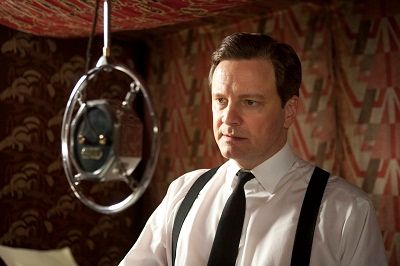
9. **A Kaleidoscope of Cinematic Brilliance: Diverse Film Roles Beyond Hogwarts**While his portrayal of Albus Dumbledore brought him global recognition, Sir Michael Gambon’s filmography was remarkably diverse, showcasing an actor unafraid to inhabit a vast array of characters across genres. His cinematic journey began subtly with a film debut in Laurence Olivier’s 1965 production of “Othello,” sharing the screen with Maggie Smith and Derek Jacobi, hinting at the powerful career that lay ahead. He later transitioned from stage-centric roles to become a highly sought-after character actor, though he himself often disputed the label.
Gambon delivered a truly indelible performance as Albert Spica, the violent gangster in Peter Greenaway’s controversial 1989 crime drama, “The Cook, the Thief, His Wife & Her Lover.” This role, which co-starred Helen Mirren and Tim Roth, allowed him to explore the darker, more visceral aspects of human nature. Film critic Roger Ebert lauded the performances, stating, “Mirren and Gambon are among the most distinguished actors in Britain—they’ve played many of the principal roles in Shakespeare—and here they find the resources to not only strip themselves of all their defenses, but to do so convincingly,” a testament to his raw power and profound depth.
Throughout the 1990s and 2000s, Gambon became a fixture in critically acclaimed films, often lending his commanding presence to ensemble pieces. He collaborated with notable directors, appearing in Tim Burton’s gothic horror “Sleepy Hollow” (1999) and Michael Mann’s political drama “The Insider” (1999). His role as the imperious Sir William McCordle in Robert Altman’s “Gosford Park” (2001) demonstrated his comedic timing and gravitas within a large, star-studded cast, contributing to the film’s BAFTA win for Outstanding British Film and numerous Academy Award nominations.
He further expanded his range with roles in Wes Anderson’s distinctive cult comedies, providing a voice in “Fantastic Mr. Fox” (2009) and appearing in “The Life Aquatic with Steve Zissou” (2004). His versatility extended to Westerns, playing the principal villain in “Open Range” (2003) alongside Robert Duvall and Kevin Costner. Later in his career, he took on memorable supporting roles in prestigious historical dramas such as “The King’s Speech” (2010) as an ailing King George V, and in Dustin Hoffman’s directorial debut “Quartet” (2012).
Even in his final years, Gambon continued to grace the screen with his distinctive talent. He narrated the Coen Brothers’ Hollywood comedy “Hail, Caesar!” (2016) and charmingly portrayed Private Godfrey in the film adaptation of “Dad’s Army” (2016). His voice also became beloved by younger audiences as Uncle Pastuzo in the “Paddington” films (2014, 2017). His final film roles included the biographical drama “Judy” (2019) and the period thriller “Cordelia” (2019), marking the end of a truly illustrious cinematic journey.
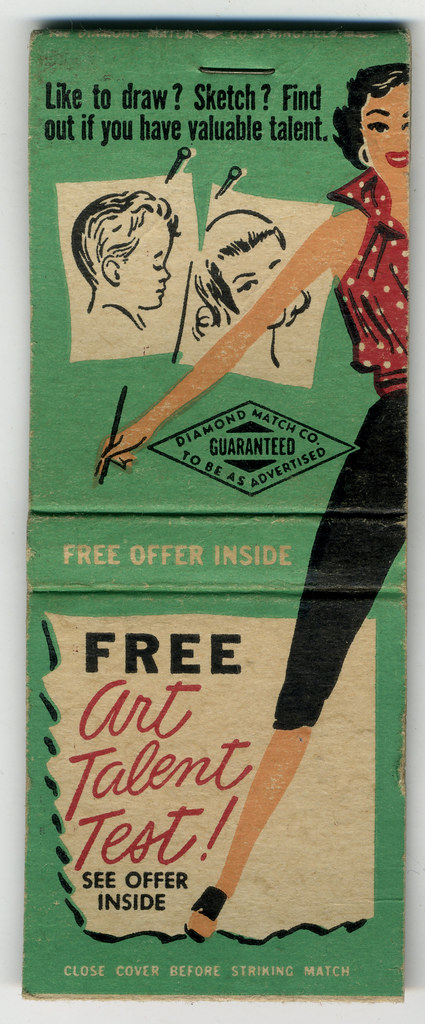
10. **Television Dominance: From Groundbreaking Mini-Series to Beloved Dramas**Beyond his iconic film roles, Sir Michael Gambon’s impact on television was equally profound, with a career marked by a series of critically acclaimed performances that redefined the medium. While “The Singing Detective” introduced him to a wider public, it was just one of many instances where his powerful presence and nuanced acting elevated the small screen, earning him significant recognition and numerous awards.
His consistent excellence in television was underscored by a remarkable achievement of four British Academy Television Awards for Best Actor. Following his win for “The Singing Detective,” he received subsequent BAFTAs for his roles as Squire Hamley in the BBC serial “Wives and Daughters” (1999), based on Elizabeth Gaskell’s Victorian novel. The New York Times praised his portrayal, noting that he made the ‘gruff on the outside, with a huge sentimental streak, the country squire’ seem ‘endearing and fresh.’ He continued this winning streak with “Longitude” (2000) and “Perfect Strangers” (2001), showcasing his talent for both drama and comedy, a testament to his unparalleled versatility.
Gambon was particularly adept at bringing complex historical and dramatic figures to life. His portrayal of President Lyndon B. Johnson in the television film “Path to War” (2002) was a tour de force, earning him nominations for a Primetime Emmy Award and a Golden Globe Award. “The Washington Post” described his performance as entirely “up to the task of making a larger-than-life icon seem painfully – and in the end, helplessly – human. It is a performance of fire and brimstone,” highlighting his ability to infuse powerful figures with profound humanity.
His later television work continued to impress, with significant roles in beloved BBC productions such as the five-part adaptation of Mrs. Gaskell’s “Cranford” novels (2007), where he acted alongside Judi Dench and Imelda Staunton. He also earned a Primetime Emmy Award nomination for Outstanding Supporting Actor for his portrayal of Mr. Woodhouse in the 2009 miniseries adaptation of Jane Austen’s “Emma,” further cementing his reputation for bringing literary classics to life with grace and depth.
In his later years, he continued to be a compelling presence on television, starring as Henry Tyson in the first and third series of Sky Atlantic’s “Fortitude” (2015, 2018). He even made a memorable appearance in the 2010 Christmas Special of “Doctor Who,” titled “A Christmas Carol.” While he was initially cast in the comedy series “Breeders” (2018), he eventually withdrew due to challenges with memorizing lines, a candid reflection of the natural progression of age and his dedication to delivering impeccable performances. His vast body of television work stands as a cornerstone of his illustrious career, defining an era of British drama.

11. **The Craft of “Playing Me”: Gambon’s Unique Acting Philosophy**Despite his extraordinary chameleon-like ability to inhabit vastly different characters, Sir Michael Gambon often articulated a surprisingly humble and pragmatic approach to his craft, which he famously summarized as “I don’t have to play anyone really. I just stick on a beard and play me, so it’s no great feat.” This philosophy, shared during an interview about his role as Dumbledore, belied the profound transformations he brought to each part, often leading him to dismiss the common label of “character actor,” preferring to see every role as merely a “variant of my own personality.”
His self-effacing remarks underscored a dedication to authenticity rather than method, suggesting that his performances drew deeply from an inner wellspring of humanity, humor, and gravitas that was uniquely his own. This perspective allowed him to infuse even the most fantastical or demanding roles, from the psoriasis-ridden Philip Marlow to the wise wizard Albus Dumbledore, with a compelling and believable presence. His assertion that he never truly “eased into a role” highlighted an instinctive, rather than intellectual, connection to his characters, allowing for a raw and immediate truth in his portrayals.
This understated philosophy contrasted sharply with the immense public and critical adoration he received, as exemplified by Sir Ralph Richardson’s grand moniker, “The Great Gambon.” While Gambon modestly dismissed it as a “circus slogan,” it perfectly captured the awe inspired by his commanding performances. Sheridan Morley’s observation that Gambon’s “eccentricity on stage now begins to rival that of his great mentor Richardson” further illustrated this unique blend of profound artistry and personal reticence, allowing his work to speak for itself without the pretense often associated with stardom.
In a testament to his unwavering commitment to his craft, Gambon candidly addressed the challenges he faced later in his career, particularly with memory retention for lines. In early 2015, he announced his retirement from stage work, acknowledging the increasing difficulty. He had experimented with earpieces for prompts but found it unsatisfactory, highlighting his integrity and refusal to compromise the quality of his performances. This honest decision, though regrettable for his admirers, underscored his deep respect for the art form and his audience, choosing to step back rather than deliver anything less than his best.
This unique approach to acting, rooted in an authentic self and an instinctive connection to character, ensured that every Gambon performance, regardless of its scale or medium, carried an unmistakable imprint of his singular talent. He was not just an actor playing a role; he was, in his own words, a variant of himself, profoundly expressive and deeply human, leaving an indelible mark on every character he brought to life.

12. **Beyond the Limelight: The Private Passions of a Public Figure**Despite his towering presence on stage and screen, Sir Michael Gambon was famously a fiercely private individual, a quality that perhaps only deepened the mystique surrounding his powerful artistry. He rarely granted interviews, and those he did, as noted by critics like Sheridan Morley, often “raised more questions than they answered.” This deliberate reticence created a distinct separation between the public persona audiences revered and the private man who preferred to remain out of the limelight when not performing.
This “non-starry star,” as Alan Ayckbourn affectionately called him, channeled much of his meticulous nature and appreciation for craftsmanship into a lifelong passion for collecting antique items. From a young age, ignited during his apprenticeship as a toolmaker, Gambon acquired a profound interest in antique guns, clocks, watches, and classic cars. These hobbies were not merely casual pursuits but serious, expensive endeavors, reflecting a discerning eye and a deep fascination with intricate mechanisms and historical craftsmanship.
In a telling interview with The Guardian in 2004, Gambon humorously contrasted his hobbies with those of a peer: “Richard Briers collects stamps. I collect cars and guns, which are much more expensive, and much more difficult to store.” This quote offered a rare glimpse into his personal world, revealing a man of precise tastes and a commitment to his passions that mirrored his dedication to acting, albeit on a far more private canvas.
His love for cars also led to a memorable public appearance on the popular BBC series “Top Gear.” Gambon, with characteristic enthusiasm, raced the Suzuki Liana so aggressively around the test track that it famously went around the last corner on two wheels. In a charming tribute to this moment, the final corner of the “Top Gear” test track was subsequently named “Gambon Corner” or simply “Gambon” in his honor, a testament to his adventurous spirit and enduring popularity beyond the theatrical world. He even returned to the show in 2006, improving his time and humorously stating about his namesake corner, “I don’t know, I just don’t like it.”
These private pursuits and occasional public glimpses into his personality offered a fuller picture of Michael Gambon: a man of immense talent who guarded his personal life, yet possessed a vibrant curiosity and an unmistakable zest for life, whether it was through the intricate workings of a classic car or the dramatic demands of a compelling role. His passions were as diverse and captivating as his performances, enriching the tapestry of a truly remarkable individual.
Read more about: The Unstoppable Crossover: How Taylor Swift & Travis Kelce are Rewriting the Playbook for NFL, Pop Music, and Modern Celebrity Culture

13. **A Glimpse into His Personal World: Family, Love, and Enduring Bonds**Sir Michael Gambon, renowned for his fiercely private nature, maintained a similarly guarded stance regarding his personal life, allowing only glimpses into his world of family and relationships. He married mathematician Anne Miller in 1962, a union that lasted for 61 years until his passing. His protective instincts were evident in his characteristic evasiveness; when once questioned by an interviewer about his wife, he playfully retorted, “What wife?”, effectively deflecting curiosity with wit.
Together, Michael and Anne had one son, Fergus, born around 1964. Fergus later carved out his own distinctive path, becoming a respected ceramics expert who regularly appeared on the popular BBC series “Antiques Roadshow.” This connection offered a rare and endearing glimpse into the family life of the private actor, highlighting a shared appreciation for craftsmanship and history, albeit in different professional realms. The couple maintained homes in Gravesend, Kent, and Aldeburgh, Suffolk, further reflecting their preference for a settled, discreet existence away from the glare of celebrity.
The complexities of his personal life became publicly known in the early 2000s when his relationship with Philippa Hart, a set designer 25 years his junior, was revealed. Gambon had reportedly introduced Hart to co-stars on the set of “Gosford Park” in 2001 as his girlfriend, and their affair became public in 2002. Following this, he moved out of the home he shared with his wife, although they later reconciled, demonstrating an enduring bond that weathered personal challenges.
His relationship with Hart, which began around 2000 when they worked together on the Channel 4 series “Longitude,” continued discreetly. In February 2007, it was announced that Hart was pregnant with Gambon’s child, and she subsequently gave birth to a son. The couple welcomed a second son in 2009, expanding Gambon’s family further. They owned a home in West London, navigating their blended family life away from constant public scrutiny, maintaining the actor’s preference for privacy.
The profound impact of his enduring marriage to Anne Miller was publicly underscored following his death. In 2024, it was reported that almost all of his considerable fortune was bequeathed to Lady Gambon, his wife of 61 years, while his long-term girlfriend Philippa Hart and their two sons were left nothing in his will. This revelation offered a final, poignant insight into the deeply personal and protected aspects of his life, reinforcing the strength of his lifelong marital bond and his commitment to his first family.

15. **The Curtain Falls: A Theatrical Giant’s Enduring Legacy**Sir Michael Gambon’s death on September 27, 2023, at the age of 82, following a bout of pneumonia, marked the quiet close of an extraordinary six-decade-long career that spanned the most prestigious stages and screens. The announcement, issued on behalf of his family by his publicist, requested privacy during a period of profound grief, allowing his loved ones to mourn the passing of a beloved husband and father who died peacefully in hospital.
His passing elicited an immediate and global outpouring of sorrow and respect, a testament to the indelible mark he left on audiences and peers alike. From his audacious beginning in Dublin’s Gate Theatre, fabricating a theatrical CV to secure his first role, to his final, poignant film appearances, Gambon’s journey was characterized by an unyielding dedication to his craft and a boundless capacity for transformation.
Gambon was a true master of versatility, capable of seamlessly transitioning from the demanding heights of Shakespearean tragedy, where his powerful voice and undeniable presence commanded the vast Olivier Theatre, to the intricate psychological dramas of television that earned him multiple BAFTAs. His portrayals, whether as the psoriasis-ridden sleuth in “The Singing Detective” or the wise, yet fiery, Albus Dumbledore, were consistently imbued with a unique blend of gravitas, mischief, and profound humanity.
His legacy is not merely defined by the numerous awards he collected—three Olivier Awards, four BAFTA TV Awards, two Screen Actors Guild Awards, and a knighthood from Queen Elizabeth II—but by the sheer breadth and depth of his performances. He challenged conventional notions of acting, preferring to see each role as a “variant of my own personality,” yet delivered characters that felt distinct, fully formed, and utterly captivating. He was a deeply private man whose public art spoke volumes, always prioritizing the performance over personal celebrity.
As the curtain falls on the life of Sir Michael Gambon, his enduring artistic spirit will continue to resonate. His work redefined possibilities in both theatre and cinema, inspiring countless actors and delighting generations of viewers. He leaves behind a monumental body of work that stands as a towering testament to his genius, securing his place as one of the preeminent theatrical giants whose contributions will be celebrated and studied for decades to come. He was, truly, a legend in every sense of the word, whose unique light will continue to shine brightly in the annals of performing arts.

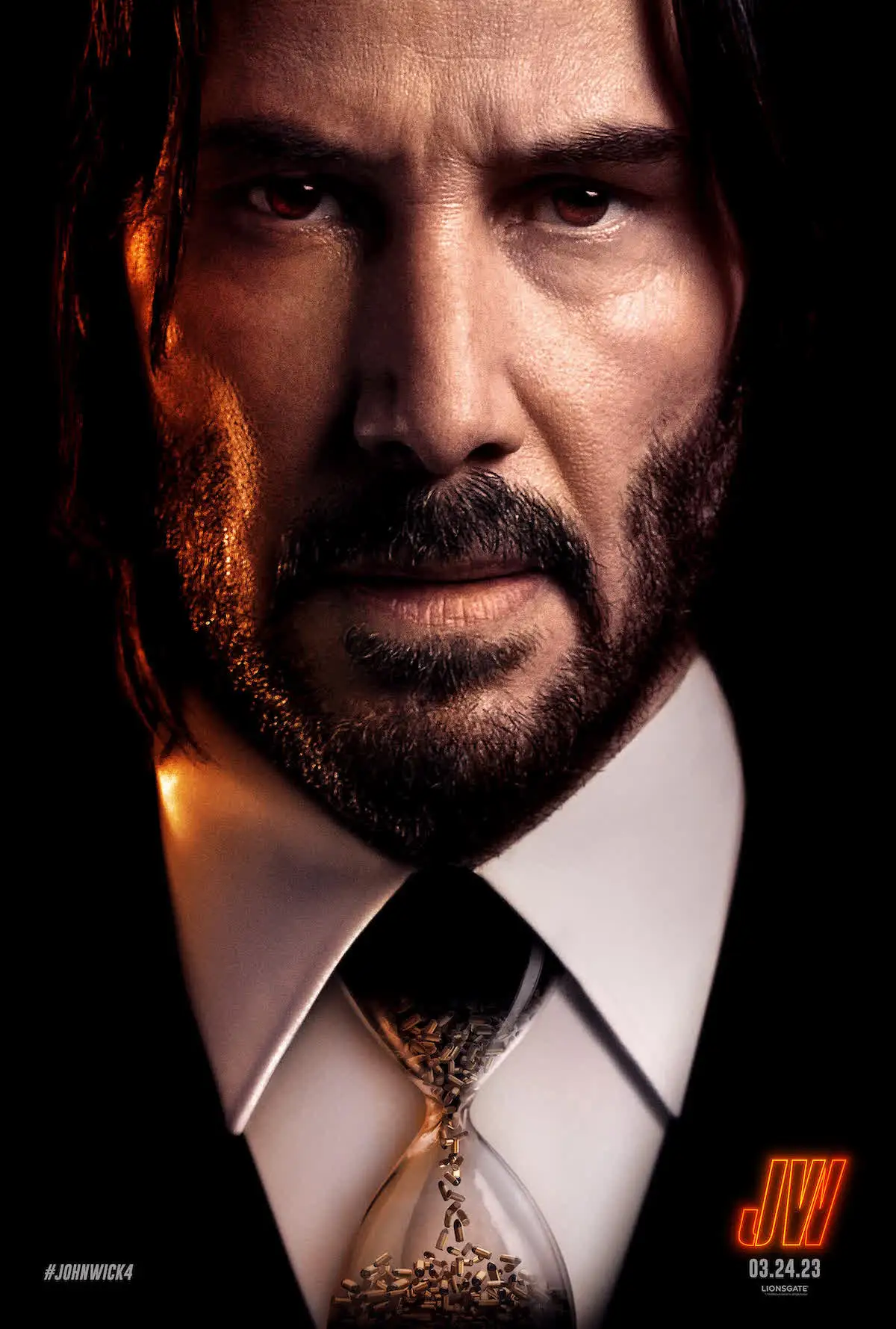

:max_bytes(150000):strip_icc()/GettyImages-2170877990-772527b2ae2e4614b54f8601450b0be8.jpg)